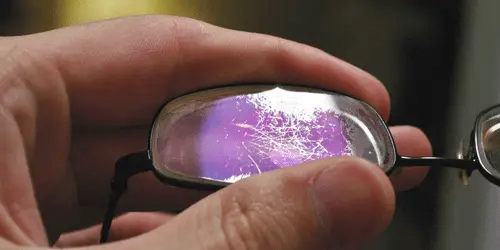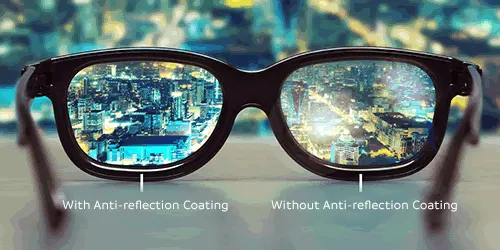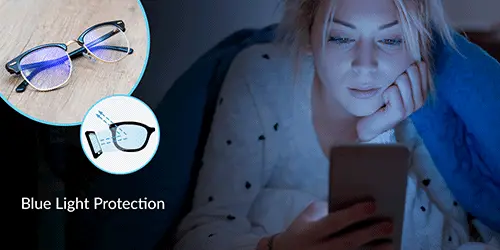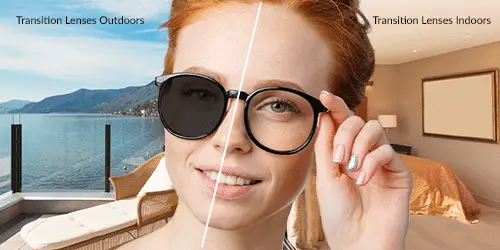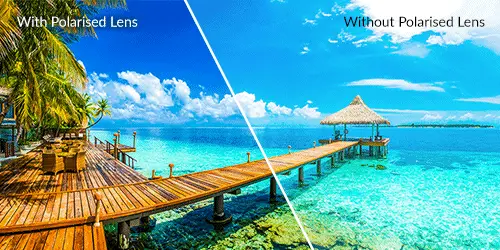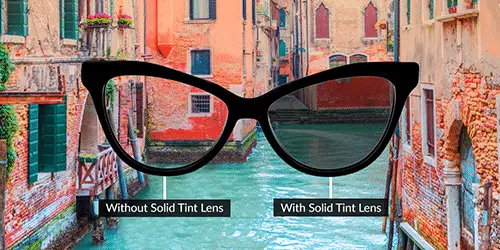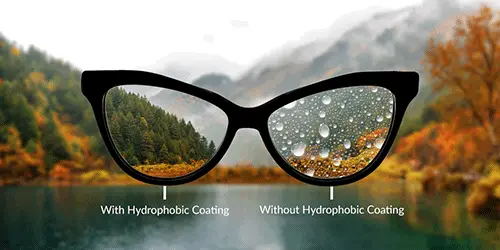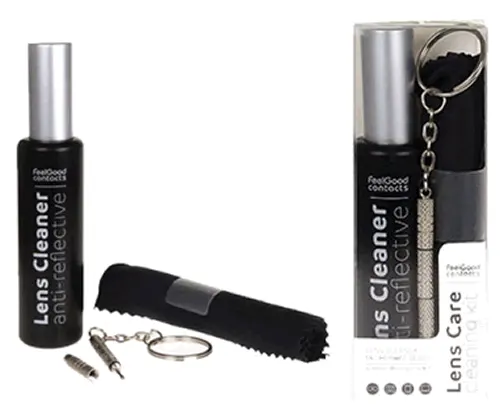The right lens coating can help to enhance your overall visual clarity when wearing glasses. At Feel Good, we offer a wide range of coatings and tints to suit your needs and preferred style. Select your vision type and lens category and we will give you the best deal on your lens package. We will turn any frame of your choice into the perfect pair of glasses for the best price online.
What are glasses lens coatings?
Glasses lens coatings provide a range of benefits for the wearer. Here are some things you should know about lens coatings:
- Glasses lens coatings can be applied to single vision lenses, bifocals and varifocals
- No matter what your vision type, you can combine the glasses lens with the right coating to protect your eyes
- You can get lens coatings which blocks UVA and UVB to protect your vision. You can also get lenses to protect you from blue light.
- Lens coatings can enhance your glasses lenses
In addition to the above, certain lens coatings are crucial depending on the lens material. For example, an anti-reflection coating should be applied to polycarbonate and high-index lenses as these reflect more light than regular plastic lenses if this coating is not applied.
Scratch Resistant Coating
Scratch resistant coating or hard coating helps to mitigate scratching from everyday glasses use. The extra coating will reduce the appearance of scratches, but it is important that you keep your glasses in a hard case to prevent any hard damage. The extra coating has a harder surface, plus please note that no coating is 100% scratch proof.
All our lenses come with a scratch resistant coating, free of charge.
An anti-reflection coating (also called anti- glare, anti-reflective coating, MAR or AR coating) is a layer that can be applied to glasses lenses to provide enhanced visual clarity by transmitting 99.9% of light to the eye. This is crucial for thinner lenses as they tend to reflect more light, all thinner (high-index) lenses come with it. It is particularly useful for night driving as it reduces the reflection of the car head light from oncoming car You can also benefit from an anti-reflection coating if you spend a lot of time in front of a computer screen.
An anti-reflection coating is also recommended for aspheric lenses which have flatter curves than regular lenses as these lenses typically cause more noticeable reflections.
The lens reduces reflections from its front and back surface of the lenses, as such, you will notice that anti-reflection lenses do not have a harsh shine. By doing so they improve the aesthetics of the lens so that they appear almost invisible allowing people to focus on your eyes rather than getting distracted by the reflections from your glasses. In addition, they help to prevent eye strain for those who spend a significant amount of time in front of screens.
You’ll be pleased to know that all of our photochromic lenses come with an anti-reflective coating. This lens coating helps photochromic lenses to reduce glare in bright and sunny conditions.
Blue light glasses are highly recommended for anyone who spends a significantly long time in front of digital devices. This means computer screens, smartphones, tablets and even the television. Modern life means we're continuously in front of screens.
Blue Light coating significantly reduces the levels of blue light being emitted to your eyes, by reflecting a percentage of the High Energy Visible (HEV) light that is emitted by artificial light from the screens of digital devices. This result is less eye strain/eye fatigue, better contrast and improved visual comfort. Blue light glasses also offer UVA and UVB protection.
Transitions® is a popular brand for photochromic lenses. Transition lenses automatically change from clear to dark when put into contact with UV rays and block 100% of UVA and UVB. They also help to reduce HEV blue light emitted by the sun and electronic devices and screens. Transition lenses are available in grey, green, and brown lenses. Some transition lenses are available in more colour choice like Amber, Sapphire and Amethyst. Below is the list of Transition lenses you can opt for:
Light Reactive
These lenses turn dark when you step outside and remain clear when inside. These lenses also come with 100% UVA and UVB protection. Basically, these are your glasses turned into sunglasses, the best of both worlds!
Transitions New Genius GEN S
These lenses quickly adapt according to the environment you are in. They will darken quickly when in sunlight and become clear when indoors, with a faster fade back time compared to other transition lenses. 100% sun protection and blue light protection against digital screens. Please note, although these lenses can be used for driving, they aren’t ideal as they won’t darken enough. For driving, opt for Transitions Drivewear.
Transitions XTRActive
For those that have light sensitivity indoors, these lenses are 35% faster when fading from dark to clear and are 100% UVA and UVB protected. Excellent for hot climates, these lenses turn extra dark in hotter temperatures. These lenses turn darkest when in the car, making them a great choice for driving.
Transitions Drivewear
Transitions Drivewear are polarised lenses that enhance colour perception and give sharper vision, hence, are considered the best option for driving. These lenses will darken outside and fade to a milder tint indoors. In low light, these lenses will turn yellow/green; in moderate to bright light they will turn copper and in bright conditions, they will turn to dark reddish brown. All the transitions will offer 100% UVA/UVB protection.
Polarised lenses work by reducing glare from the light reflected off surfaces (water, wet roads, snow & car hood). Glare can be a nuisance and, in some instances, dangerous when you’re doing an activity, temporarily obstructing your vision and causing you to strain or squint your eyes. Polarised lenses have a filter integrated that blocks horizontal reflective glare.
They reduce eye strain and deepen contrast, creating a better perception of colour, as well as offering 100% UVA and UVB protection. Nevertheless, polarised lenses make it difficult to view mobile phone and LCD screens.
Gradient lenses are sunglasses that feature a colour graduation, from the top to the bottom of the lens. They offer 100% UVA and UVB protection from the sun, without dimming out the entire eye line of the wearer. Gradient lenses upper tint offers protection as you look upwards but allow for more light to pass through the lens at the bottom. This is particularly useful if you're driving and need to see your dashboard, if you’re going shopping, or if you're walking through an area where the ground is uneven.
A solid tint allows for slight vision enhancement and added protection against the sun’s UVA and UVB rays. Which tint you choose depends mostly on your personal needs and personal preference.
Solid tints are recommended for very bright light conditions. Our tints are classified as dark solid tints which are available in the following colours: grey, green and brown (Filter category 3 – 85% light absorption).
They all offer 100% UVA/UVB protection. Grey tints are the most popular tints as they reduce brightness, gives most natural vision and colour distortion. Brown tints enhance both contrast and depth perception (i.e. driving and golf). Green tints reduce glare and eye strain under bright light conditions, good for everyday use.
Mirrored lenses are the best for bright environments; they minimise the glare from reflective surfaces for comfortable vision. Whether you want to go skiing or hiking on a sunny day, you can rely on these tint lenses. They come with 100% UVA/B protection This option is an absolutely fabulous choice for fashion glasses too, because of mirrored lenses, they offer fashion with vision protection!
So why not convert your prescription glasses to prescription sunglasses?
Hydrophobic coating resists water droplets from resting on your lenses. Any water encountering the lens surface is better handled and repelled because of this water repellent coating.
They are also anti-static and keep away any dust or dirt particles from your lenses.
They generally are easier to clean compared to standard lenses without a hydrophobic coating, as the design repels stains and grease from our fingers. This means your lenses will require less maintenance, making it a convenient option and ideal for those with active lifestyles.
Glasses lenses with an anti-fog coating eliminate the condensation of moisture that causes fogging on your lenses.
Anti-fog lenses are great for the colder months or for when playing sports as this can cause perspiration which can limit your ability to see, therefore posing a safety issue. Some profession such as police officers, surgeons, nurses and chefs will particularly benefit from an anti-fog coating.
You can apply anti-fog coatings to plastic, glasses high-index lenses and photochromic lenses.
How to Remove Lens Coating from Your Glasses?
Should your anti-reflective lens coating get scratched, you may wish to remove it all together. Whilst there are many articles on how to strip coating off lenses, it is not advised. If you are unhappy with your lenses, the only option would be to buy new ones and change them altogether.
Best Glasses Cleaners for Coated Lens
It is essential to look after your coated lenses by cleaning them regularly. Avoid using alcohol, washing up liquid or concentrated substances to clean coated glasses lenses as this can wear the coating off as well as damage the frames of your glasses.
Instead, we would recommend that you use our Feel Good Cleaning Kit to clean your coated glasses lenses. This handy accessory includes a lens cleaner, micro fibre lens cloth and a screwdriver to keep your glasses in tip top condition. The non-alcoholic lens cleaner comes in a spray bottle and can be used for an effective clean on all lens types.

 Offers
Offers Account
Account
 Favorite
Favorite
 Basket
Basket

 OFFERS
OFFERS















